Ground Improvement Solutions
For cost-effective foundations in locations with challenging soils
How Do We Help
As Ontario’s original ground improvement specialists, and having completed 100’s of ground improvement projects across Ontario, GeoSolv’s specialized teams of ground improvement engineers and technical experts have a deep understanding of local soil conditions and are well-positioned to help project teams lay the foundation for a wide range of commercial building and infrastructure projects.

Building Foundations and Floor Slabs
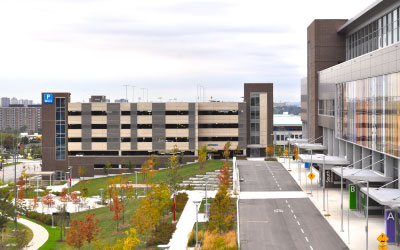
Retaining Walls, Slopes & Embankments
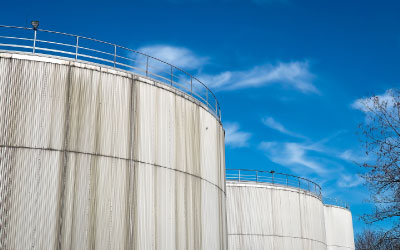
Tanks and Power Plants

Transportation (Rail, Roads, Airports)
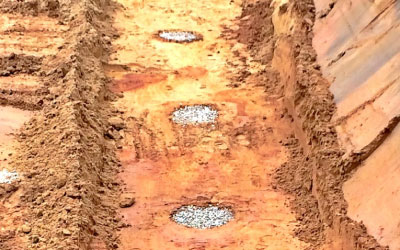
Seismic Risk and Liquefaction
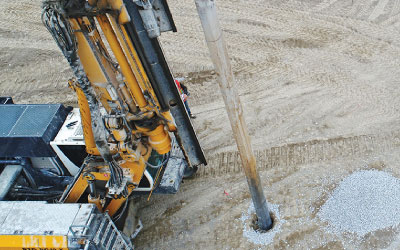
Underground Infrastructure
What is Ground Improvement and How Does GeoSolv Deliver?
Ground improvement is the stabilization of soils to increase their bearing capacity, provide stability, control seepage, and provide liquefaction resistance. GeoSolv’s Geo-Structural Engineering Team provides sound recommendations based on rigorous analyses of site soils and applied structural loads, along with the use of specialized equipment and construction procedures for modifying the ground’s character, with or without the addition of engineered material. Technologies to do so include: GP3® System, Impact® System, Rampact® System, X1® System, Densipact® System and Rapid Impact Compaction (RIC).
What Ground Improvement Systems Are Available And How Do They Compare?
| Ground Improvement Systems Comparison | Rammed Aggregate Pier Systems | Rapid Impact Compaction | Stone Column (“Aggregate Piers”) | Vibro Compaction | Dynamic Compaction |
|---|---|---|---|---|---|
| Suitable for Misc. Fill Soils? |  |
 |
 |
 |
 |
| Suitable for Sand? |  |
 |
 |
 |
 |
| Suitable for Silt/Clay? |  |
 * * |
|||
| Suitable for Peat/Organics? |  |
||||
| Massive Lateral Stress Increase? |  |
||||
| Vertical Ramming Energy? |  |
||||
| Clean & Dry Construction? |  |
 |
 |
||
| High Shear Strength for Global Stability? |  |
*The horizontal vibration used to install stone column (“aggregate piers”) can negatively impact the existing silt and clay soils. Care should be taken when considering stone column (“aggregate piers”) in these soils, and reduced capacities are likely.
Further Insights on the Geopier® Rammed Aggregate Pier System
The precision Rammed Aggregate Pier (RAP) System called “Geopier®” was developed by the Geopier Foundation Company early in the 1990s to provide an efficient and cost-effective foundation solution for the support of settlement sensitive structures in challenging soil conditions. This innovative system was developed to avoid large-scale over-excavation and replacement with more cohesive soils. Due to its unique construction method, Geopier RAP elements provide greater capacity than traditional stone column (“aggregate piers”) – particularly in non-sand soil conditions (clay, silt, organic-containing and fill soils).
Why Use Geopier RAP’s Versus Stone Column ("Aggregate Piers")
Vertical Ramming
Thin lifts of aggregate are rammed to form a pier with undulating sides. Thin lifts allow for better compaction of the aggregate and results in significantly higher shear strength and stiffness. The tamper forces aggregate into the RAP element sidewalls – providing excellent pier-soil coupling.
Direct Crowd Force
Rather than being lowered off a crane, the vertical ramming energy is augmented by direct machine downward crowd pressure of 15 to 30 tonnes on each lift. Direct crowd combined with the vertical ramming energy (not horizontal) massively densifies the stone and drives up lateral stress in the surrounding soil, resulting in higher performance.
Alternative Aggregates
The Rammed Aggregate Pier® (RAP) construction method is easily adaptable to use recycled concrete or cement treated aggregate. Alternative aggregates provide flexibility to achieve more in various soil types.
Soil Conditions
Geopier RAP elements can be installed in almost all soil conditions. The vertical ramming process contributes to increasing the lateral stresses in the matrix soils, which is especially important for soils with silt or clay content that do not respond well to horizontal vibrations.
Greater Capacity
The ramming process produces the superior strength of a Geopier Rammed Aggregate Pier (RAP) and develops constructed aggregate friction angles greater than 48 degrees – almost 40% greater than those reported for stone column ("aggregate piers"). Higher friction angles provide greater pier capacity, which means fewer Geopier elements are required.
Higher Bearing Pressure
Higher friction angles allow for higher bearing capacities, which results in smaller footings and lower foundation costs. Be aware that you may find stone column or generic “aggregate pier” suppliers looking to dial back bearing capacity as a result of a lower capacity pier on your next project. Insist on a Rammed Aggregate Pier for maximum bearing performance.
Better Settlement Control
The unique ramming process creates piers that are two to nine times stiffer than stone column ("aggregate piers"). Versatile Geopier RAPs can be used for light to heavily loaded structures in most soil conditions.
Proven Advantages
The orientation of installation forces is an important distinction when considering ground improvement methods in Ontario. While some geologic regions in the province are known for their deposits of sand, non-sand soil such as silt and clay are more commonly encountered in Ontario and project teams must carefully consider the performance of stone column ("aggregate pier") elements in these soils. Fill is also a common occurrence – particularly in the Greater Toronto Area. No ground improvement system performs better than Geopier in undocumented fill.
Watch our Ground Improvement Key Concepts and Applications Video
Let’s Get Started With Your Project Assessment
At GeoSolv, we believe trust is earned – that’s why we offer a complimentary assessment in the early due-diligence stage of our projects. The assessment will identify the most cost-effective ground improvement solution for your locations’ unique soil challenges, and if GeoSolv does not have the right solution, other options outside the GeoSolv suite of solutions will be recommended.
Book your complimentary assessment now, or send your project documentation to inquiries@geosolv.ca or call us anytime at (905) 266-2599 to discuss your project. We look forward to hearing from you!
Book a No-Charge Project Assessment
Save Time
Reduce Costs
Lower Risks
Did You Know?
GeoSolv can get your project started without a foundation permit in place.
“Ground Improvement is not only about cost effective builds. It ensures the longevity of your building and infrastructure projects in locations with low quality soils and helps to mitigate the damage of seismic shifts.”
Read our Case Studies
Client Testimonials
-
Sean Fox VP of Construction, Fieldgate Commercial Management Limited (FCML)
“GeoSolv accomplished the ground improvement precisely on schedule, and for precisely the agreed amount. GeoSolv also provided a geotechnical certification for the pad allowing Costco to construct their prototypical building without modifications. Since we were able to avoid the exposure to the unknowns of conventional re-engineering, we will never know how much money we actually saved using Geopier’s, but I feel that it would be considerably more than the $2M savings we can quantify, and certainly the difference between Costco opening on schedule or not.”

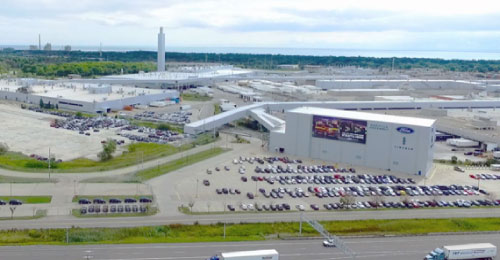
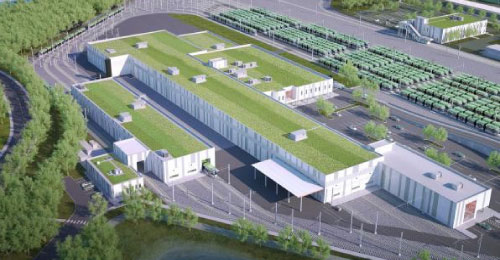
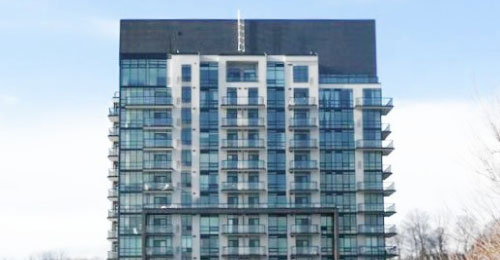

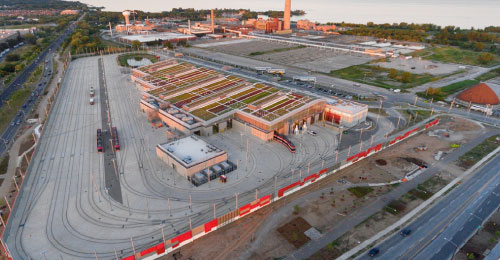



 100% Canadian Owned and Operated
100% Canadian Owned and Operated